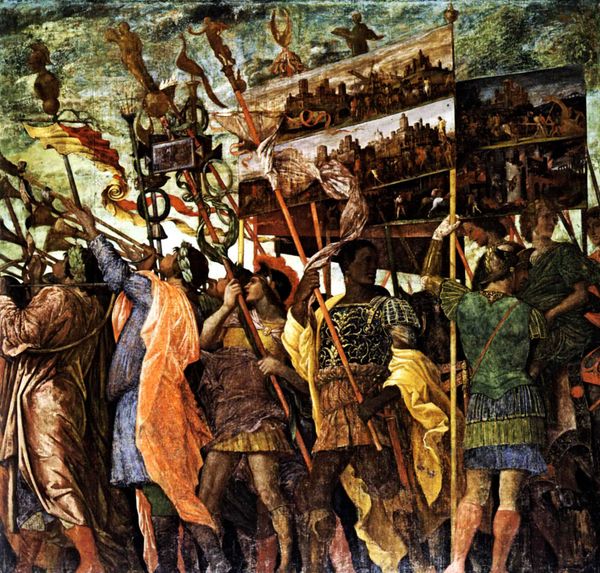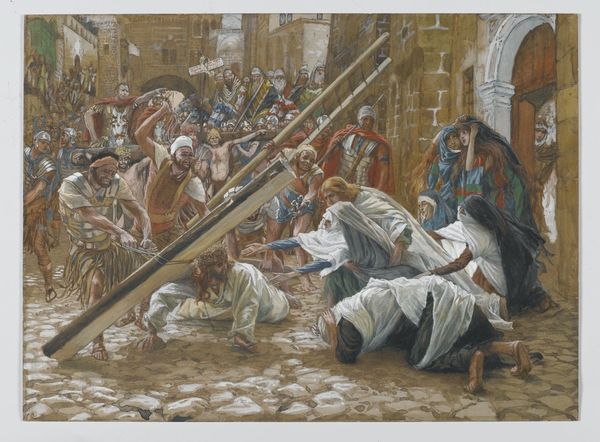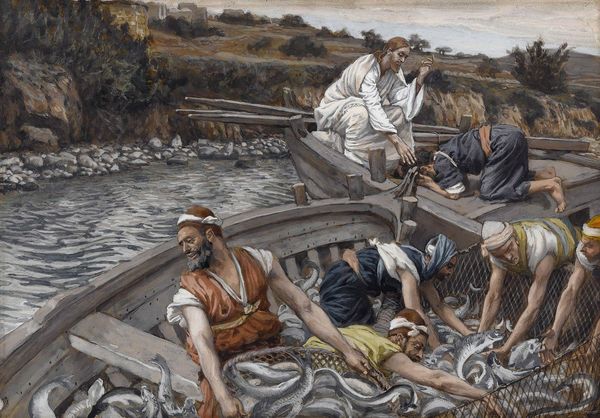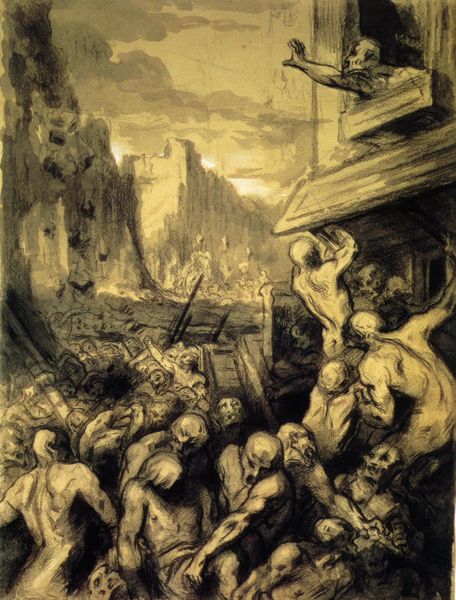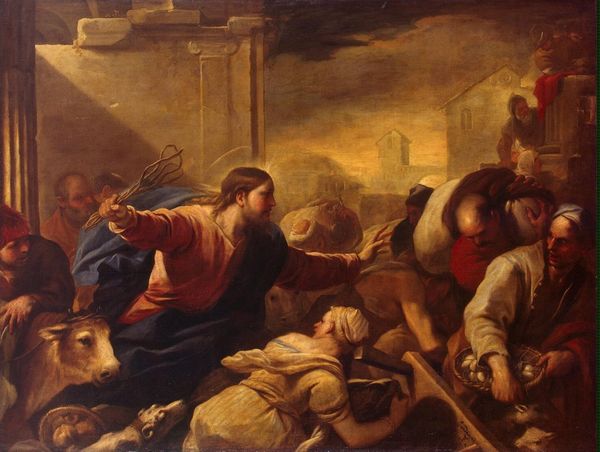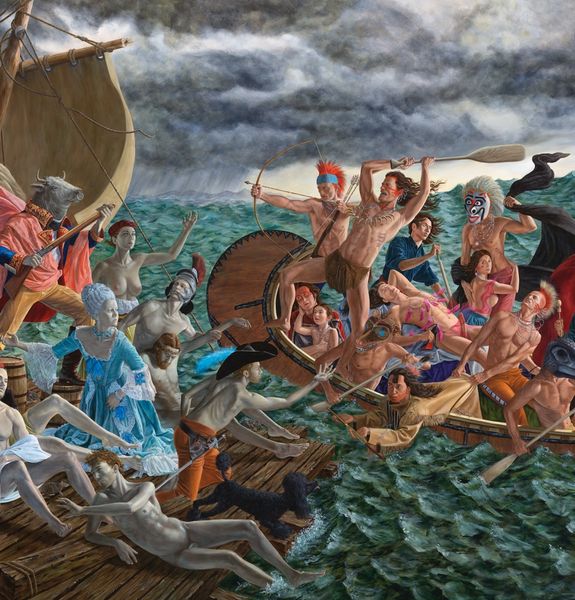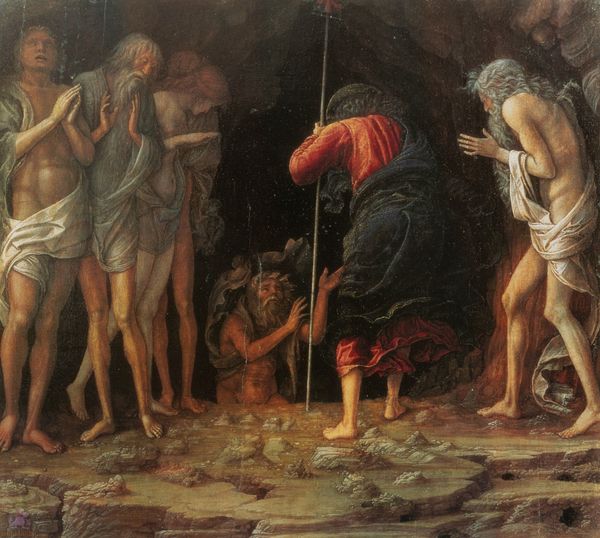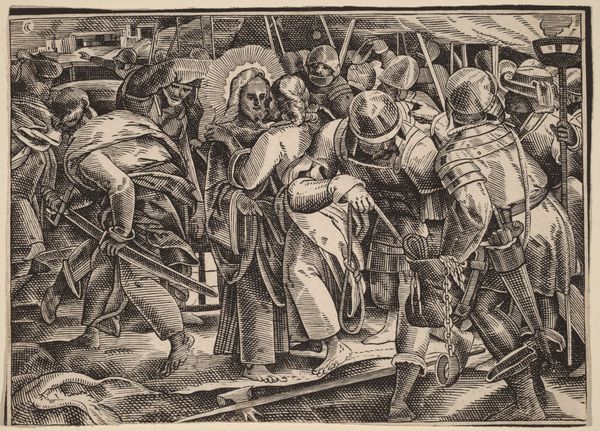
painting, oil-paint
#
portrait
#
medieval
#
allegory
#
narrative-art
#
painting
#
oil-paint
#
landscape
#
figuration
#
mythology
#
symbolism
#
history-painting
#
pre-raphaelites
Copyright: Public domain
Curator: This is Edward Burne-Jones's painting, "The Council Chamber," created in 1890, rendered in oil. The tableau unfolds as a still life where slumber permeates everything it touches. Editor: The figures seem caught in a perpetual state of suspension, their expressions conveying an odd mixture of weariness and serenity. I feel as though time has folded in on itself within this depicted scene. Curator: The subject stems from the tale of Sleeping Beauty, where a kingdom succumbs to enchanted sleep. Burne-Jones presents not the awakening kiss, but the suspended animation before. This resonates profoundly given the context of late 19th-century Britain and its fascination with the medieval aesthetic, known as the Pre-Raphaelite movement. Editor: The pervasive sense of stillness almost feels politically charged. Consider the figures seemingly held captive by the encroaching briars—are they held in slumber by an oppressive patriarchy? Curator: It's compelling to view those overgrown thorns through the lens of gender and power. It makes me ponder whether Burne-Jones, albeit working within a pre-existing framework, subverted his era's expectation of womanhood? Were the figures merely passive recipients of a curse? I suggest Burne-Jones painted these figures into the roles society forced on women during that time period. Editor: Absolutely. It speaks volumes about societal expectations imposed onto women as decorative or stagnant figures, reflected within the somber mood he constructs here. There’s that distinct Pre-Raphaelite rejection of industrial England too, an aesthetic choice which infuses itself in this visual narrative. Curator: Indeed, from a cultural studies point of view, Burne-Jones used allegory as critique. In the end the "The Council Chamber," is an insightful narrative regarding gender and political power. Editor: Thinking about Burne-Jones and "The Council Chamber" prompts questions regarding our contemporary understanding of socio-political expectations then and now. Curator: For me, examining Burne-Jones’s "The Council Chamber" shows how art's political voice develops through critical interpretations over time.
Comments
No comments
Be the first to comment and join the conversation on the ultimate creative platform.

